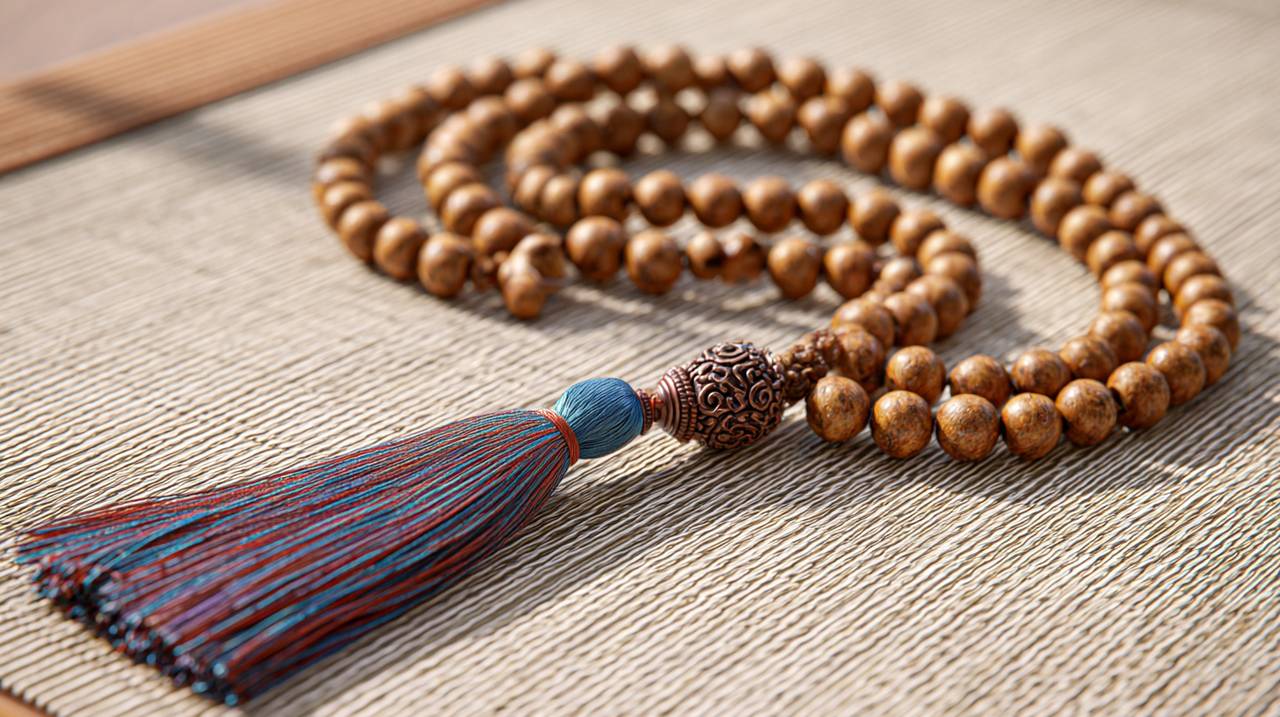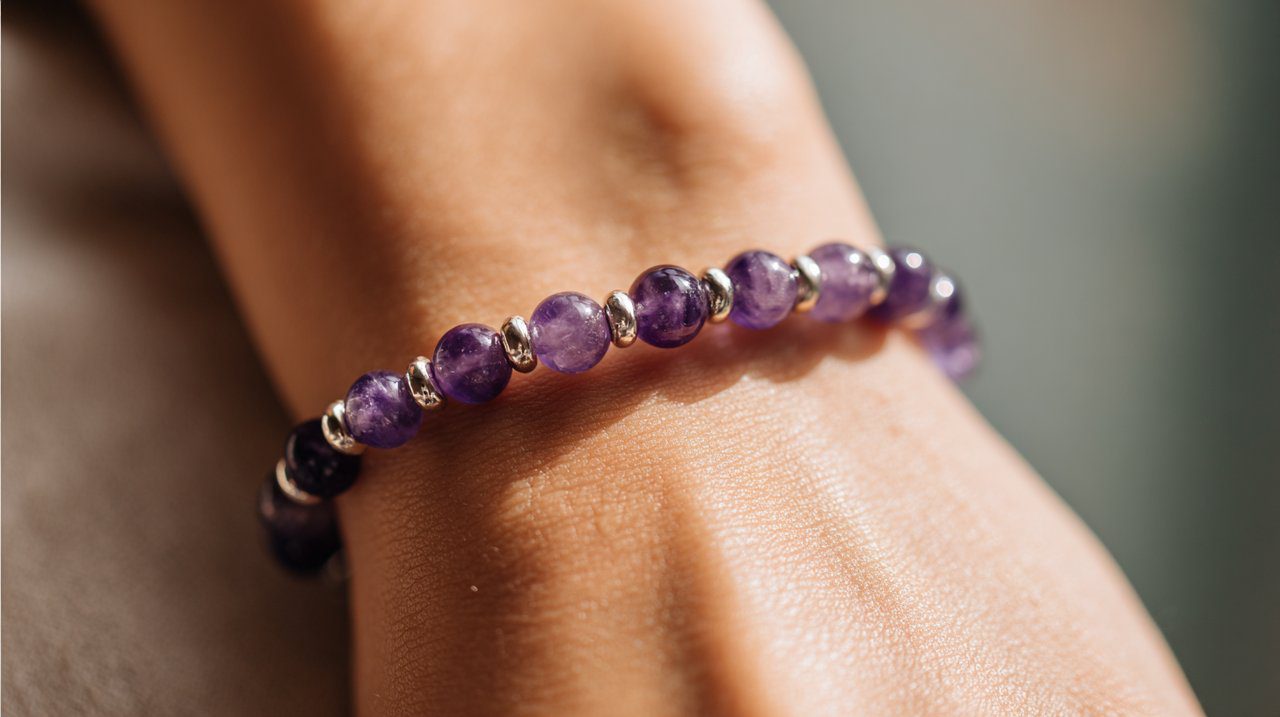The Sacred Geometry of Silence: Unveiling the Spiritual Significance of Mala Bead Counts
The gentle click of beads, the quiet hum of a mantra – for centuries, mala beads have been cherished companions on countless spiritual journeys. But have you ever truly considered the precise number of beads in a mala bracelet and why that count isn’t just a random detail? It’s far from arbitrary; each bead, and the total sum, carries profound spiritual weight, acting as a direct link to ancient wisdom and personal transformation, much like the deeper symbolism found in a Buddha bracelet itselfBuddha Bracelet Meaning: A Guide to Energy Flow and Inner Harmony.
The Canonical Count: Unpacking the 108 Mala Beads

Historical Roots and Widespread Adoption
Historically, the 108-bead mala originated in India, where it became an essential tool for Japa meditation. This practice involves the repetitive chanting of mantras, and the prayer beads quickly became the standard for how many beads on a mala were needed to complete a full spiritual cycle. This specific mala bead number is revered across diverse spiritual paths, symbolizing a complete cycle or journey. A larger guru bead and a tassel typically mark the beginning and end of these 108 repetitions, offering a tangible anchor for concentration during your practice.
The Guru Bead and Tassel: More Than Just Markers
Beyond the 108 main beads, a mala almost always features a guru bead, sometimes called the Sumeru bead, and a tassel. The guru bead symbolizes the teacher or the divine, serving as a point of reflection before you begin a new round of mantras. It’s important to remember it’s not counted as part of the 108, but rather provides a sacred pause. The tassel, often crafted from silk or cotton, carries its own rich symbolism. It can represent the lotus of a thousand petals, spiritual enlightenment, or our deep connection to the divine, a symbolism deeply resonant with the profound meanings associated with the Tibetan lotusTibetan Lotus: A Guide to Its Profound Symbolism and Spiritual Path. It’s a beautiful visual reminder of the journey. For those seeking deeper symbolic meaning, exploring the rich heritage of Tibetan jewelry often reveals similar intricate designs and profound spiritual significance.
Cosmic Connections: The Profound Symbolism of 108
So, why 108? The sheer prevalence of this number of beads in a mala across so many spiritual and even scientific contexts points to a deeper, universal significance. It’s as if this number acts as a tiny model of the cosmos, reflecting profound truths about our existence.
Astronomical Alignments
Ancient sages, keen observers of the heavens, consistently found 108 to be a recurring sacred number. Consider these fascinating connections:
- The average distance of the Sun and Moon from Earth is approximately 108 times their respective diameters.
- In Hindu astrology, there are 108 constellations (nakshatras) and 108 divisions of the sky.
- The diameter of the Sun is roughly 108 times the diameter of the Earth.

These celestial links infuse the mala with a sense of cosmic alignment, connecting your individual spiritual practice to the grand rhythms of the universe.
Yogic and Ayurvedic Principles
Within the realms of yoga and Ayurveda, 108 carries equal weight. It’s believed that our bodies contain:
- 108 energy lines, known as nadis, which converge to form the heart chakra.
- 108 marma points, vital energy points used in Ayurvedic healing.
Repeating a mantra 108 times is thought to activate these crucial energy centers, helping to purify both body and mind. This makes the mala bead number a direct and powerful tool for energetic balance and well-being.
Mathematical and Philosophical Dimensions
Beyond the tangible, the number 108 holds intriguing mathematical and philosophical significance. It’s a Harshad number, meaning it’s divisible by the sum of its digits (1+0+8=9, and 108/9=12). Philosophically, its individual digits can represent:
- 1: Symbolizing God, higher truth, or the unity of all things.
- 0: Representing emptiness, completeness, or the spiritual journey itself.
- 8: Signifying infinity or eternity.
Together, these digits beautifully illustrate a journey from individual truth to cosmic understanding, embodying the very essence of spiritual seeking.
Beyond Tradition: Exploring Variant Mala Bead Counts
While 108 is undoubtedly the traditional standard, the question of how many beads in a mala isn’t always answered with that single number. Variations exist, often depending on specific practices or practical needs. These shorter malas offer flexibility without compromising spiritual intent.
Wrist Malas: 27 and 54 Beads
For those who need a more portable option or prefer shorter meditation sessions, malas with 27 or 54 beads are quite common. These are often designed as wrist malas, making them easy to wear and access.
- A 27-bead mala represents one-quarter of a full 108-bead mala. It’s ideal for quick meditations, setting intentions throughout your day, or a focused mini-practice.
- A 54-bead mala is half of the traditional count. This makes it suitable for moderate practice or when a full mala feels a bit too cumbersome for the moment.

These smaller counts allow practitioners to maintain their connection to the sacred numbers, even when time or space is limited, ensuring your practice remains consistent.
Custom Counts and Personalization
Occasionally, you might encounter malas featuring other mala bead numbers, specifically tailored to personal intentions or aesthetic preferences. While these are less traditional, the core essence remains the same: to provide a tangible tool for focus and intention.
It’s vital to remember that the true power of a mala lies not just in its bead count, but in the intention and mindfulness you bring to its use. The numbers serve as a guiding blueprint for spiritual discipline, but your inner commitment is key.
Embodying Intention: Integrating Mala Counts into Practice
Understanding the number of beads in a mala truly transforms it from a simple necklace into a potent spiritual necklace instrument. This awareness allows you to align your practice more deeply with its intended purpose, making every touch count.
Enhancing Japa Meditation
For Japa meditation, the beads offer a tactile way to track your mantra repetitions. This frees your mind from the distraction of counting, allowing for deeper concentration and a more immersive experience. Each bead becomes a powerful touchstone for a sacred sound. Knowing that 108 repetitions align with profound cosmic and energetic principles can significantly amplify your focus and the perceived efficacy of your practice. It becomes a rhythmic, conscious dance between your mind, breath, and the divine sound.
Setting and Manifesting Intentions
Beyond mantra repetition, a mala can also be used beautifully for setting daily intentions or affirmations. Holding a bead for each positive statement imbues it with focused energy, helping you manifest your desires.
The mala acts as a silent witness to your intentions, absorbing your prayers and echoing them back to the universe with each bead you touch.
Whether you’re using a 108-bead mala for a profound meditation session or a 27-bead wrist mala for a moment of mindfulness before a challenging task, the count subtly guides your spiritual journey.
A Sacred Journey: Mala Beads in Contemporary Spirituality
In our fast-paced modern world, the ancient wisdom embedded in mala beads remains profoundly relevant. They offer a tangible connection to mindfulness and spiritual growth, beautifully transcending cultural and religious boundaries.
From Ancient Ritual to Modern Mindfulness
Malas are no longer solely confined to traditional rituals; they are now embraced by countless individuals seeking peace, focus, and spiritual connection in everyday life. Understanding how many beads in a mala bracelet and their significance empowers this modern practice. They serve as a constant, gentle reminder to pause, breathe, and reconnect with your inner stillness. This makes them powerful allies for anyone navigating the complexities of contemporary existence, offering a moment of calm in a busy world.
The Mala as a Personal Spiritual Anchor
Ultimately, a mala, regardless of its specific mala bead number, acts as a deeply personal spiritual anchor. It’s a constant, gentle presence that encourages introspection, fosters gratitude, and promotes mindful living. By truly understanding the deeper meaning behind these Buddhist mala beads, you’re not just wearing a beautiful accessory. You are carrying a piece of ancient wisdom, a powerful tool for transformation, and a profound symbol of your ongoing spiritual journey. It’s a connection to something much larger than yourself. The journey through the numbers of a mala bead reveals a rich tapestry woven with ancient wisdom, cosmic patterns, and profound spiritual intention, echoing the fundamental principles for overcoming suffering and achieving liberationHow to Understand the Buddha’s Four Noble Truths|A Guide to Overcoming Suffering and Achieving Liberation. Whether you hold a traditional 108-bead mala or a compact wrist mala, understanding why the count matters transforms it from a simple object into a powerful ally on your path to self-discovery and inner peace. By recognizing the sacred geometry and spiritual significance embedded in each count, you don’t just count beads; you connect with a lineage of seekers, inviting deeper mindfulness and purpose into every breath and mantra.
💡 Frequently Asked Questions
The number 108 is deeply rooted in ancient spiritual traditions, particularly Hinduism and Buddhism, symbolizing a complete cycle or journey. It holds cosmic connections, such as the average distance of the Sun and Moon from Earth being 108 times their diameters, and has significance in yogic principles like 108 energy lines (nadis) and marma points. Mathematically and philosophically, its digits represent unity (1), emptiness/journey (0), and infinity (8).
The guru bead, also called the Sumeru bead, symbolizes the teacher or the divine and serves as a point of reflection, marking a sacred pause before beginning a new round of mantras. It is not counted as part of the 108 beads. The tassel, often made of silk or cotton, symbolizes spiritual enlightenment, the lotus of a thousand petals, or our connection to the divine.
Yes, while 108 is traditional, variations exist for portability or shorter meditation sessions. Common counts include 27 beads (one-quarter of 108) for quick meditations or setting intentions, and 54 beads (half of 108) for moderate practice. These are often used as wrist malas.
Understanding the bead count transforms a mala into a potent spiritual instrument. For Japa meditation, it provides a tactile way to track mantra repetitions, freeing the mind for deeper concentration. Knowing the cosmic and energetic principles behind numbers like 108 can amplify focus and the perceived efficacy of the practice, making it a powerful tool for energetic balance and well-being.








